The Spectrum of Neurological Manifestations of Human Herpesvirus 6 Infection in Children
- PMID: 34540417
- PMCID: PMC8439402
- DOI: 10.7759/cureus.17183
The Spectrum of Neurological Manifestations of Human Herpesvirus 6 Infection in Children
Abstract
Human herpesvirus 6 (HHV-6) is a member of the Herpesviridae family. There are two HHV-6 species: HHV-6A and HHV-6B. HHV-6B causes the majority of documented primary infections and reactivation events. In this case series, we illustrate the varied spectrum of clinical and radiological features of HHV-6 encephalitis and its management in children. We have described three cases of HHV-6 encephalitis in the age group between nine months and two years. All had an HHV-6 viral load detected in cerebrospinal fluid (CSF) samples. Two of which are of immunocompetent patients. This case series highlights the importance of including HHV-6 infection as one of the differential diagnoses in a child with suspected central nervous system infection and of considering adding CSF HHV-6 polymerase chain reaction (PCR) test for detection. Increasing awareness of this condition will aid physicians in the timely diagnosis and early treatment of HHV-6 encephalitis.
Keywords: acute disseminated encephalomyelitis; encephalitis; ganciclovir; human herpesvirus 6; roseola infantum.
Copyright © 2021, Chencheri et al.
Conflict of interest statement
The authors have declared that no competing interests exist.
Figures
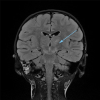

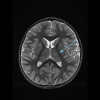
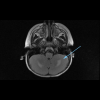
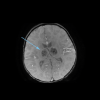
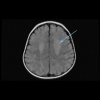
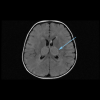
Similar articles
-
[Establishment and clinical application of a new real time PCR assay for simultaneous detection of human herpesvirus-6A and human herpesvirus-6B].Zhonghua Er Ke Za Zhi. 2009 Jul;47(7):527-31. Zhonghua Er Ke Za Zhi. 2009. PMID: 19951517 Chinese.
-
Molecular detection of human herpesvirus 7 DNA in cerebrospinal fluid from adult patients with neurological disorders.J Neurovirol. 2018 Jun;24(3):333-338. doi: 10.1007/s13365-018-0618-4. Epub 2018 Mar 13. J Neurovirol. 2018. PMID: 29536269
-
Human Herpesvirus-6 Encephalitis Associated With Acute Necrotizing Encephalopathy in an Immunocompetent Child: A Case Report and Literature Review.Cureus. 2023 Jun 3;15(6):e39897. doi: 10.7759/cureus.39897. eCollection 2023 Jun. Cureus. 2023. PMID: 37404398 Free PMC article.
-
Human herpesvirus 6B encephalitis in a liver transplant recipient: A case report and review of the literature.Transpl Infect Dis. 2021 Feb;23(1):e13403. doi: 10.1111/tid.13403. Epub 2020 Jul 21. Transpl Infect Dis. 2021. PMID: 32638491 Free PMC article. Review.
-
The role of herpesvirus 6A and 6B in multiple sclerosis and epilepsy.Scand J Immunol. 2020 Dec;92(6):e12984. doi: 10.1111/sji.12984. Epub 2020 Oct 23. Scand J Immunol. 2020. PMID: 33037649 Free PMC article. Review.
Cited by
-
A Classic Presentation of Roseola Infantum.Cureus. 2024 Jan 18;16(1):e52504. doi: 10.7759/cureus.52504. eCollection 2024 Jan. Cureus. 2024. PMID: 38371053 Free PMC article.
-
A Fatal Case of Tuberculosis Meningitis in Previously Health Children.Pediatr Rep. 2022 Apr 9;14(2):175-180. doi: 10.3390/pediatric14020024. Pediatr Rep. 2022. PMID: 35466203 Free PMC article.
References
-
- A population-based study of primary human herpesvirus 6 infection. Zerr DM, Meier AS, Selke SS, et al. N Engl J Med. 2005;352:768–776. - PubMed
-
- Human herpesvirus-6 infection in children. A prospective study of complications and reactivation. Hall CB, Long CE, Schnabel KC, et al. N Engl J Med. 1994;331:432–438. - PubMed
-
- Acute necrotizing encephalopathy associated with human herpesvirus-6 infection. Ohsaka M, Houkin K, Takigami M, Koyanagi I. Pediatr Neurol. 2006;34:160–163. - PubMed
-
- Human herpesvirus-6 may be neurologically injurious in some immunocompetent children. You SJ. J Child Neurol. 2020;35:132–136. - PubMed
Publication types
LinkOut - more resources
Full Text Sources
